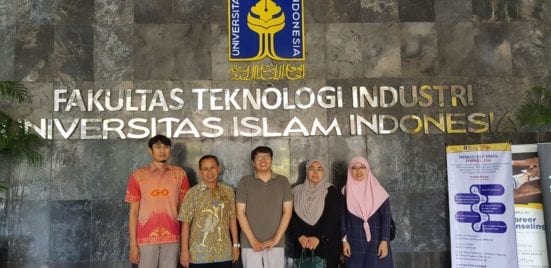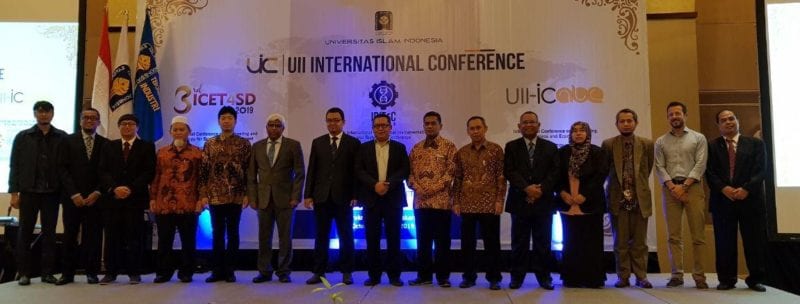Universitas Islam Indonesia (UII), Yogyakarta, Indonesia had invited Assoc. Prof. Dr. Norlaili Mat Safri as Keynote Speaker and Dr. Nurul Ashikin from UTM Faculty of Engineering as Invited Speaker to share their research which is related to Industry 4.0 in the field of biomedical instrumentation and electronics with their participants. The UII hosted the joint conference of the International Biomedical Instrumentation and Technology Conference (IBITeC), International Conference on Engineering Technology for Sustainable Development (ICET4SD), and International Conference on Accounting, Business and Economics (ICABE) which was held at the Royal Ambarrukmo Hotel, Yogyakarta on October 23 and October 24, 2019. The theme for this Joint Conference was “Empowerment of Industry 4.0 for Healthcare and Welfare”.
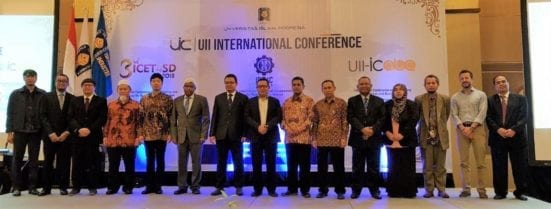
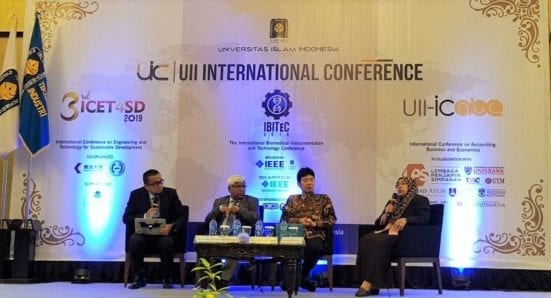
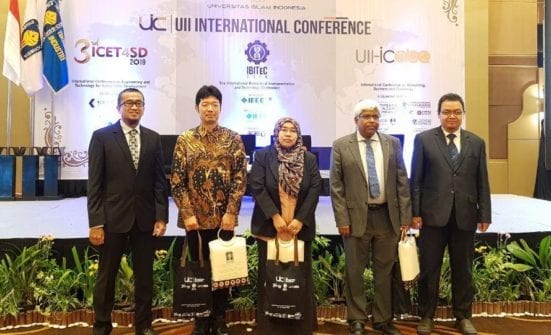
Picture 3 – From left: Dr. Sisdarmanto Adinandra (UII), Assoc. Prof. Dr. Tomohiko Igasaki (Kumamoto University), Assoc. Prof. Dr. Norlaili Mat Safri (UTM), Prof. Udantha Abeyratne (Queensland University), Dr. Hendra Setiawan (UII)

The industry 4.0 employs technologies for automation and data exchange through cloud computing, big data, internet of things (IoT), augmented reality, and etc. The IoT brings together physical objects with embedded electronics, software, sensors and network connectivity which means, they are able to collect and exchange data with each other. This leads to advancement in wearable health technology such as using smartwatches to collect data of user’s personal health and exercise, wristbands equipped with sensors to keep track of the user physical activity and heart rate, and sync to various smartphone apps for health and fitness recommendations, wearable ECG monitors and wearable blood pressure monitors that looks like typical smartwatch. Among various emerging technologies, smartphone-based analysis appears to be a promising platform for non-invasive patient health monitoring due to its accessibility.
The keynote presentation by Assoc. Prof. Dr. Norlaili explored the method of developing a portable smartphone-based cardiac self-stress test device which was spearheaded by Dr. Mohd Afzan Othman of bioMedical Instrumentation and Electronic (bMIE) research group. The device will be useful to sort out patient’s case priority as well as providing pre-diagnosis results before conducting a real cardiac stress test in hospital as well as to help users to monitor their own health anytime and anywhere. The cardiac stress test is a procedure to exert pressure on the heart by doing physical activities to determine heart functionality and abnormal heart activity. It is done to gather information on heart condition supported by evidence in the form of the ECG signal (the electrical heart signals). There are several procedures to determine the type of Cardiovascular disease (CVD) and the cardiac stress test is one of them. New technology emerges from Industry 4.0 such as a smartphone with sensors which makes cardiac stress test in hospitals available for self-test through the development of smart health device.
Smartphones play an important role in the healthcare industry. Thus, the increase in smartphone usage is in parallel with the rising demand for wireless and smartphone-compatible medical devices. This, in turn, promotes awareness and focus on health and fitness, and demand-led growth for home-usage. In addition, a flexible wireless ECG monitoring device paired with a smartphone could overcome the bulkiness of Holter monitor for ambulatory ECG monitoring; the extensive wire connections of this device limit the user mobility. As technologies in the healthcare field improve with time, this may result in the increase of development cost and subsequently the price of wearable devices, making them less affordable for people in developing countries. To overcome this issue, as what was highlighted by Dr. Nurul Ashikin during the conference, cutting plotter method is able to fabricate flexible wireless ECG monitoring device on polymer material using cutting plotter method, with no need of screen printing, inkjet printing or even direct printing which require higher maintenance cost for the device.
Further discussion on collaboration of the thence event between the Biomedical Engineering Unit, Department of Electrical Engineering from Fakultas Teknologi Industri of UII and bMIE research group which was represented by Assoc. Prof. Dr. Norlaili and Dr. Nurul Ashikin of School of Electrical Engineering is needed for future events.
